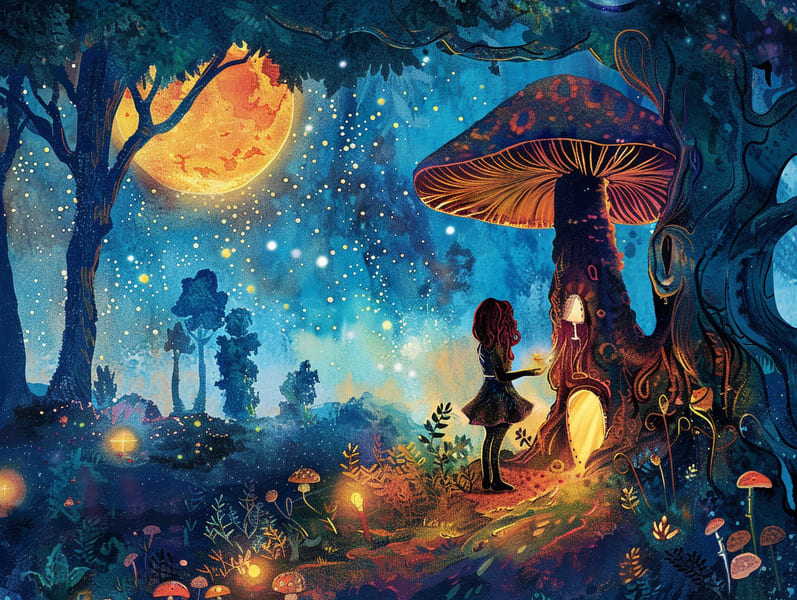The Evolution of Fairy Tales for Kids with Its Continued Grandeur.
The Evolution of Fairy Tales for Kids with Its Continued Grandeur.
Blog Article

Famous fairy tales have old origins. These narratives have been spoken from one generation to the next long before they were ever put on paper. They developed from a variety of civilizations, including Indigenous traditions. They were initially transmitted among elders, often carrying themes and messages concerning the societal norms and beliefs of the time.
The renowned Brothers Grimm, Jacob and Wilhelm, were among the first to compile and publish many of these beloved tales. Their compilation, "Grimm's Folk Tales," included tales like "The Story of Cinderella," "The Bread Crumb Trail," and "Schneewittchen," which have since become hallmarks in the world of famous fairy tales. Similarly, H. C. Andersen's whimsical narratives, such as "The Story of the Little Mermaid," and "The Little Duckling," have floated into hearts worldwide, establishing their place in the pantheon of timeless fairy tales.
Even though they are old, these stories remain as meaningful as ever, especially as children's bedtime stories. These enchanting tales are now available in many formats, including vividly illustrated books, delightful animations, and online storybooks.
Their enduring popularity can be attributed to several whimsical characteristics:
Significant Morals: Traditional fairy tales often share important moral lessons. Narratives like "The Boy Who Cried Wolf" teach the significance of truthfulness, while "The Tale of the Tortoise and the Hare" highlight the traits of determination and meekness. These stories offer the young clear distinctions between right and wrong, molding their moral compass in a gentle yet important way.
Kindness and Comprehension: Fairy tales frequently involve characters facing obstacles and hardships, motivating young listeners to understand with their struggles and celebrate their triumphs. For instance, "Beauty's Beast" points out the importance of appreciating inner worth to appreciate the inner spirit of a being, cultivating warmth and knowledge.
Cultural Appreciation: Many timeless fairy tales are rooted in the cultural contexts from which they emerged. Discovering these tales can provide captivating looks into different heritages, advancing a sense of world insight and awareness.
Fantasy and Imagination: The enchanted elements in timeless fairy tales—spells and potions—activate children’s innovations. These stories take readers to fantastical realms, provoking creative thinking and a sense of amazement that lasts a lifetime.
Classic fairy tales are not only captivating but also teaching. They act as bewitching tools in developing various mind and heart abilities in the young. When traditional fairy tales are recited, they develop verbal development by introducing new language items and detailed sentence structures. This practice also improves hearing abilities and focus, as young readers keep up with the story, anxious to see what happens next.
Furthermore, examining the themes and characters of timeless fairy tales can foster analytical skills and intellectual skills. Little ones are guided to recognize patterns, expect results, and make sense of cause and effect. These deliberations also help little ones utter their thoughts and feelings, adding to their emotional intelligence.
In today’s online age, the presence of internet fairy tales has made these tales more acquirable than ever. Web platforms and apps present comprehensive collections of children's fairy tales that can be experienced or listened via anytime, anywhere. Fairy tales voiced are particularly popular, presenting an captivating way for little ones to appreciate these spellbinding stories. Read-aloud books and read-out-loud stories guide characters and settings to life, often enhanced by magical melodies and music that improve the narrative experience.
The timeless fascination of old fairy tales lies in their ability to adapt to new eras while holding onto their core values. Contemporary modernizations of these narratives often present more varied protagonists and modern settings, making them meaningful to today’s audience. However, the core values of spirit, benevolence, and righteousness remain unchanged, continuing to reach kids of all ages.
Old fairy tales also offer a sense of solace and closeness. They supply a structured narrative with a apparent beginning, middle, and end, often drawing to a close with the solving of conflicts and the triumph of rightness over wrongness. This reliability can be relieving for young ones, allowing a sense of firmness in an fluid world.
Ancient fairy tales continue to enthrall and edify new generations, maintaining their elegance and significance in modern society. As kids' this site bedtime tales, they give a perfect blend of enchantment and education, enriching moral values, empathy, and creativity. The accessibility of digital storybooks and the well-received status of fairy tales told out loud ratify that these traditional fairy tales remain obtainable to new generations.
By continuing and distributing these stories, we continue to pay tribute to the rich tapestry of fables and cultural heritage. Whether you are reading a gorgeously illustrated book, browsing a online collection, or listening through an narrated book, the fascination of bedtime fairy tales is always within reach. These fairy tales reveal of the unending impact of stories and its ability to bond us across centuries and lands.
Even if you are viewing a artistically illustrated book, exploring a cyber library, or hearing an sound book, the splendor of popular fairy tales is always within reach.
These fairy tales emphasize of the persistent power of fairy tales and its ability to tie us across time and space, forming a connection that captivates and teaches alike.